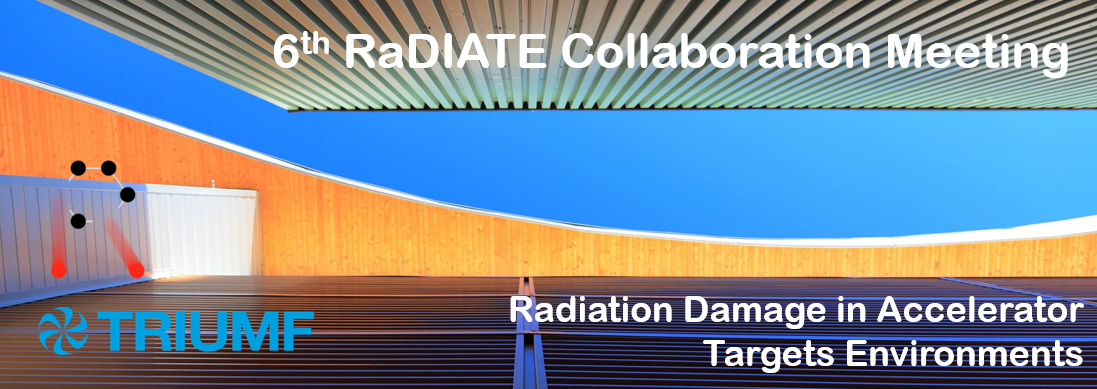Speaker
Dr
Katharina Domnanich
(NSCL, MSU)
Description
The harvesting of rare isotopes at the National Superconducting Cyclotron Laboratory (NSCL) is accomplished by the deposition of heavy ion beams in a water filled beam blocker. With the dissipation of such large amounts of energy, not only a plethora of radionuclides is formed, radiolysis reactions are induced as well. The thereby created various radiolytic products can either react with each other, resulting in mutual annihilation, or escape into the bulk solution. In general, molecular products such as hydrogen peroxide, molecular oxygen and hydrogen exhibit longer life times and could potentially increase to considerable levels in open systems. In order to ensure adequate water conditions for isotope harvesting, knowledge about the behavior of these species is vital. This will become particularly significant when considering the intended utilization of an aqueous beam blocker at the upcoming Facility for Rare Isotope Beams (FRIB).
In several exploratory experiments at the NSCL the formation of H2O2, H2 and O2 was investigated with heavy ion beams of low intensity. To mimic the conditions expected at FRIB, the water filled beam blocker was irradiated with a high intensity proton beam (5–50 μA) for several hours at the Cyclotron Research Laboratory at the University of Wisconsin–Madison. The formation of H2O2, H2 and O2 in the harvesting system’s water was calculated based on the applied beam power; however, the measured levels (max. 586 μM H2O2, 5.5% H2, 10 ppm dissolved O2) were considerably lower. Based on these observations, an aqueous phase reaction of hydrogen peroxide and hydrogen is rendered possible. Additionally, elevated water temperatures could be expected, which would influence the primary yields of both species. The current model would support the interaction of all radiolytically formed species, even though the volume of irradiated water (~40 L) was much larger compared to conventional aqueous cyclotron targets.
Primary author
Dr
Katharina Domnanich
(NSCL, MSU)
Co-authors
Mr
Colton Kalman
(NSCL)
Mrs
Emily Abel
(Michigan State University)
Prof.
Gregory Severin
(NSCL, MSU)
Prof.
Jonathan Engle
(University of Wisconsin - Madison)
Mr
Todd Barnhart
(UW-Madison, Cyclotron Lab)
Mr
Wesley Walker
(NSCL)

